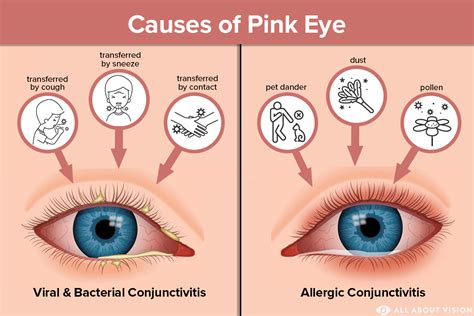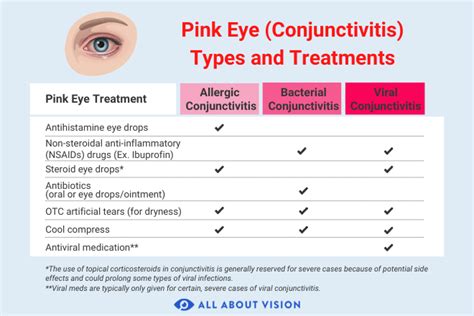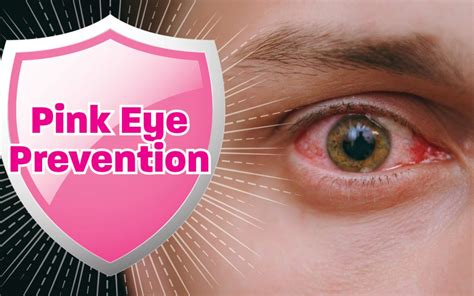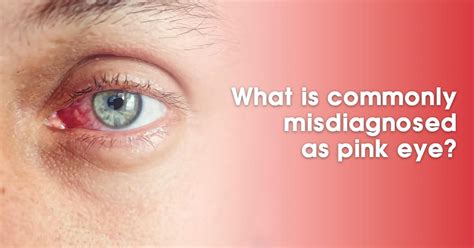Intro
Discover common pink eye symptoms, causes, and treatments. Learn about conjunctivitis, eye infections, and itchy eyes to alleviate discomfort and promote recovery.
Pink eye, also known as conjunctivitis, is a common and highly contagious eye condition that affects millions of people worldwide. It is characterized by inflammation of the conjunctiva, which is the thin membrane covering the white part of the eye and the inside of the eyelids. Pink eye can be caused by a variety of factors, including viral or bacterial infections, allergies, or irritants. In this article, we will delve into the world of pink eye, exploring its symptoms, causes, treatment options, and prevention methods.
The importance of understanding pink eye cannot be overstated. If left untreated, pink eye can lead to complications such as vision loss, eye pain, and even blindness. Furthermore, pink eye is highly contagious, making it essential to take preventive measures to avoid spreading the infection to others. By recognizing the symptoms of pink eye and seeking medical attention promptly, individuals can reduce the risk of complications and ensure a speedy recovery.
Pink eye is a common condition that can affect anyone, regardless of age or health status. It is essential to be aware of the symptoms of pink eye to seek medical attention promptly. Some of the common symptoms of pink eye include redness, itching, burning, discharge, and blurred vision. In severe cases, pink eye can cause eye pain, sensitivity to light, and even vision loss. By understanding the symptoms of pink eye, individuals can take the necessary steps to prevent the condition and seek medical attention if symptoms persist.
Causes of Pink Eye

Viral Conjunctivitis
Viral conjunctivitis is the most common type of pink eye and is often caused by the same viruses that cause the common cold or flu. The symptoms of viral conjunctivitis include redness, itching, burning, discharge, and blurred vision. Viral conjunctivitis is highly contagious and can be spread through contact with an infected person's hands, eyes, or respiratory secretions.Bacterial Conjunctivitis
Bacterial conjunctivitis is caused by bacteria such as Staphylococcus aureus or Haemophilus influenzae. The symptoms of bacterial conjunctivitis include redness, itching, burning, discharge, and blurred vision. Bacterial conjunctivitis can be spread through contact with an infected person's hands, eyes, or respiratory secretions.Symptoms of Pink Eye

Redness and Inflammation
Redness and inflammation of the conjunctiva are common symptoms of pink eye. The conjunctiva becomes inflamed and red, giving the eye a pink appearance.Itching and Burning
Itching and burning sensations in the eyes are common symptoms of pink eye. The eyes may feel itchy, scratchy, or burning, especially when exposed to light or wind.Treatment Options for Pink Eye

Antibiotic Eye Drops
Antibiotic eye drops or ointment are commonly used to treat bacterial conjunctivitis. The antibiotic eye drops or ointment help to kill the bacteria causing the infection and reduce the symptoms of pink eye.Antiviral Medication
Antiviral medication is commonly used to treat viral conjunctivitis. The antiviral medication helps to reduce the severity of the symptoms and speed up the recovery process.Prevention Methods for Pink Eye

Practicing Good Hygiene
Practicing good hygiene is essential to prevent the spread of pink eye. Washing hands frequently, especially after touching the eyes or coming into contact with someone who has pink eye, can help reduce the risk of infection.Avoiding Close Contact
Avoiding close contact with people who have pink eye can help reduce the risk of infection. Pink eye is highly contagious, and close contact with an infected person can increase the risk of transmission.Complications of Pink Eye

Vision Loss or Blindness
Vision loss or blindness is a potential complication of pink eye. If left untreated, pink eye can cause permanent damage to the eyes, leading to vision loss or blindness.Eye Pain or Sensitivity
Eye pain or sensitivity to light is a common complication of pink eye. The eyes may become sensitive to light, causing discomfort or pain when exposed to bright lights.Conclusion and Next Steps

We invite you to share your thoughts and experiences with pink eye in the comments section below. Have you or someone you know been diagnosed with pink eye? What were your symptoms, and how did you treat the condition? Share your story with us, and let's work together to raise awareness about pink eye and promote eye health.
What are the symptoms of pink eye?
+The symptoms of pink eye include redness, itching, burning, discharge, and blurred vision. In severe cases, pink eye can cause eye pain, sensitivity to light, and even vision loss.
How is pink eye treated?
+The treatment options for pink eye depend on the cause of the infection. Antibiotic eye drops or ointment are commonly used to treat bacterial conjunctivitis, while antiviral medication is used to treat viral conjunctivitis. Antihistamine eye drops or oral medication are used to treat allergic conjunctivitis.
Can pink eye be prevented?
+Yes, pink eye can be prevented by practicing good hygiene, avoiding close contact with people who have pink eye, and not sharing personal items. Using protective eyewear, such as goggles or glasses, when engaging in activities that may irritate the eyes can also help reduce the risk of infection.
